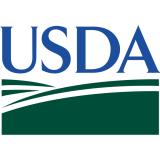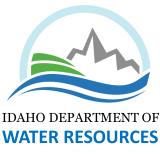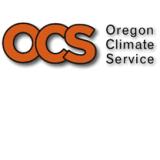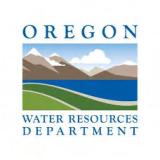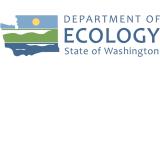Drought continues to worsen in the Pacific Northwest.
Key Points
- Statewide total March and April precipitation ranks as the driest on record for Idaho, 2nd driest for Oregon, 3rd driest for Montana, and 4th driest for Washington since 1895.
- There are also long-term precipitation deficits within the region. Specifically, the Lower Columbia Basin in Washington, southern Oregon east of the Cascade crest, and south central Idaho have 2-year precipitation totals that are only 50%–70% of normal.
- The official May-June-July forecast from the NOAA Climate Prediction Center shows higher chances of above-normal temperatures and below-normal precipitation for most of the region, which indicates that drought conditions are likely to get worse in the coming months.
- The Significant Wildland Fire Potential Outlook shows higher chances of wildfire potential east of the Cascade crest throughout Oregon and into southwest Washington by June and July.
- Impacts are being felt across the region with poor pasture and rangeland conditions, reduced irrigation, more spring season fires than previous years, poor crop conditions, and the need to haul water or move livestock out of drought-impacted areas.
Current U.S. Drought Monitor map for the Pacific Northwest, as of May 11, 2021. The U.S. Drought Monitor (USDM) is updated each Thursday to show the location and intensity of drought across the country. Drought categories show experts’ assessments of conditions related to dryness and drought including observations of how much water is available in streams, lakes, and soils compared to usual for the same time of year.
U.S. Drought Monitor Categories
Current U.S. Drought Monitor map for the Pacific Northwest, as of May 11, 2021. The U.S. Drought Monitor (USDM) is updated each Thursday to show the location and intensity of drought across the country. Drought categories show experts’ assessments of conditions related to dryness and drought including observations of how much water is available in streams, lakes, and soils compared to usual for the same time of year.
Current Conditions
- Expanded portions of south central Oregon are now in Extreme (D3) and Exceptional (D4) Drought, according to the U.S. Drought Monitor. Extreme Drought (D3) emerged in central Idaho this week as well. Despite above-normal April 1 snowpack across much of Washington, recent precipitation deficits have prompted expansion of Abnormally Dry (D0) conditions, and Moderate to Severe Drought (D1–D2).
- Widespread warm and dry conditions have led to a rapid snowmelt. The Oregon Cascades have seen particularly rapid degradations in SWE (snow water equivalent) percent of normal. For example, the Willamette Basin was at 118% of normal SWE on April 1 and currently (May 13) sits at just 45% of normal.
- March and April precipitation was much below normal throughout the Pacific Northwest. Averaged statewide, the total 2-month March and April precipitation ranked as the driest on record in Idaho, 2nd driest in Oregon, 3rd driest in Montana, and 4th driest in Washington (NOAA National Centers for Environmental Information; records since 1895). Over the last 60 days, precipitation has been between 10% and 50% of normal for large areas of Washington, Oregon, Idaho, and a small area of southwestern Montana, representing precipitation deficits between 1 and 5 inches, depending on the location.
- There are also long-term precipitation deficits within the region. Specifically, the Lower Columbia Basin in Washington, southern Oregon east of the Cascade crest, and south central Idaho have 2-year precipitation totals that are only 50%–70% of normal.
- The lack of spring rain has resulted in a widespread decline in seasonal streamflow forecasts across the region. For example, streamflow in the Big Lost and Big Wood rivers in central Idaho have set or are close to setting record lows.
- Soil moisture percentiles are extremely low throughout the non-mountainous regions of the Pacific Northwest. In some locations, streamflows have not responded to the little rain that has fallen due to the extremely dry soils. Southwest Washington, western Oregon, southern Idaho, and northeast Washington have 28-day average streamflows below the 10th percentile, with some record lows being reported.
Percent of Normal Precipitation: March 11–May 9, 2021

Soil Moisture Percentile: May 7, 2021

28-Day Average Streamflow Conditions: May 3, 2021

Drought Impacts
- Thus far in 2021, state-level drought emergency executive orders have been issued in eight of Oregon's 36 counties, with two additional counties declaring local drought emergencies. In Idaho, five counties have Drought Emergency Declarations. As of May 4, the U.S. Department of Agriculture has also designated many counties (contiguous counties neighboring primary counties) in the region as natural disaster areas due to recent drought conditions including 26 in Oregon, 20 in Idaho, and one in Washington.
- Dry, warm, and in some areas windy conditions have resulted in dust storms, soil erosion, and stress for dryland wheat. Across Oregon, fields are being left fallow, and cattle and livestock are being shipped out of drought-affected areas. In south central Oregon and central Idaho, there is reduced water for irrigation.
- According to the latest USDA National Agricultural Statistics Service Northwest Reports, range and pasture conditions are poor, with reports of hauling water for livestock to private and federal allotments in Oregon. In Washington, there are reports of low germination spots in fields after fall planting due to poor soils and low moisture.
- The Oregon Department of Forestry has reported triple the number of small wildfires this spring, partly due to widespread dry conditions across Oregon. The City of Salem and Washington County implemented an open burn ban due to higher temperatures, low humidity, moderate winds, and dry conditions from April 14–23.
U.S. Pasture and Rangeland Conditions: May 2, 2021

Outlook and Potential Impacts
- The official May-June-July forecast from the NOAA Climate Prediction Center shows higher chances of above-normal temperatures and below-normal precipitation for most of the region, which indicates that drought conditions are likely to get worse in the coming months.
- The Significant Wildland Fire Potential Outlook shows higher chances of wildfire potential east of the Cascade crest throughout Oregon and in southwest Washington by June and July.
- According to the latest water outlook report issued by the USDA Natural Resources Conservation Service, nearly all reservoirs in the Klamath Basin are storing less than 50% capacity, and basin streamflows are expected to run between 8% to 49% through the summer.
- In addition to the worsening impacts already being felt across the region, there is also the potential for dry conditions to impact drinking water, endangered species and wetland ecosystems, and fire danger.
U.S. Seasonal Temperature Outlook: May–July 2021

U.S. Seasonal Precipitation Outlook: May–July 2021

For More Information
- NIDIS and its partners will issue future updates as conditions evolve.
- More local information is available from the following resources:
- For additional regional drought and wildfire resource information, see 2021 Pacific Northwest Drought Resources.
- Register now for the next Pacific Northwest Drought Early Warning System webinar on June 28 at 11 a.m. PDT.
Prepared By
Britt Parker
NOAA National Integrated Drought Information System
Karin Bumbaco
Office of the Washington State Climatologist
David Hoekema
Idaho Department of Water Resources
Ryan Andrews
Oregon Department of Water Resources
Larry O’Neill
Oregon Climate Service
Scott Oviatt
USDA Natural Resources Conservation Service
Holly Prendeville
USDA Northwest Climate Hub
This drought status update is issued in partnership with the states of Oregon, Washington, and Idaho, the USDA Northwest Climate Hub, the USDA Natural Resources Conservation Service, and the Oregon Climate Change Research Institute to communicate a potential area of concern for drought expansion and/or development within the Pacific Northwest based on recent conditions and the upcoming forecast. NIDIS and its partners will issue future drought status updates as conditions evolve.




